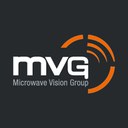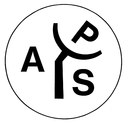Multibeam Antennas and Beamforming Networks Design
G. Toso, P. Angeletti
European Space Agency, ESA ESTEC, The Netherlands
 Giovanni Toso (S’93, M’00, SM’07) received the Laurea Degree (summa cum laude) and the Ph.D. in Electrical Engineering from the University of Florence, Florence, Italy, in 1992 and 1995, respectively. In 1996 he was visiting scientist at the Laboratoire d'Optique Electromagnétique, University of Aix-Marseille III, France. From 1997 to 1999 he was a Post Doctoral student at the University of Florence. In 1999 he was a visiting scientist at the University of California, Los Angeles (UCLA). In the same year he received a scholarship from Thales Alenia Space (Rome, Italy) and he has been appointed researcher in a Radioastronomy Observatory of the Italian National Council of Researches (CNR). Since 2000 he is with the Antenna and Submillimeter Section of the European Space and Technology Centre of the European Space Agency, ESA ESTEC, Noordwijk, The Netherlands. He has been initiating and contributing to several R&D activities on satellite antennas based on arrays, reflectarrays, constrained lenses and reflectors. G. Toso has co-authored more than 50 technical papers published in peer reviewed professional journals, more than 200 papers published in international conferences’ proceedings, and more than 10 international patents. In 2009 he has been coeditor of the Special Issue on Active Antennas for Satellite Applications in the International Journal of Antennas and Propagation. G. Toso is a co-guest editor together with Dr. R. Mailloux of the Special Issue on “Innovative phased array antennas based on non-regular lattices and overlapped subarrays” published on the IEEE Transactions on Antennas and Propagation in 2014. G. Toso is an Associate Editor of the IEEE Transactions on Antennas and Propagation.
Giovanni Toso (S’93, M’00, SM’07) received the Laurea Degree (summa cum laude) and the Ph.D. in Electrical Engineering from the University of Florence, Florence, Italy, in 1992 and 1995, respectively. In 1996 he was visiting scientist at the Laboratoire d'Optique Electromagnétique, University of Aix-Marseille III, France. From 1997 to 1999 he was a Post Doctoral student at the University of Florence. In 1999 he was a visiting scientist at the University of California, Los Angeles (UCLA). In the same year he received a scholarship from Thales Alenia Space (Rome, Italy) and he has been appointed researcher in a Radioastronomy Observatory of the Italian National Council of Researches (CNR). Since 2000 he is with the Antenna and Submillimeter Section of the European Space and Technology Centre of the European Space Agency, ESA ESTEC, Noordwijk, The Netherlands. He has been initiating and contributing to several R&D activities on satellite antennas based on arrays, reflectarrays, constrained lenses and reflectors. G. Toso has co-authored more than 50 technical papers published in peer reviewed professional journals, more than 200 papers published in international conferences’ proceedings, and more than 10 international patents. In 2009 he has been coeditor of the Special Issue on Active Antennas for Satellite Applications in the International Journal of Antennas and Propagation. G. Toso is a co-guest editor together with Dr. R. Mailloux of the Special Issue on “Innovative phased array antennas based on non-regular lattices and overlapped subarrays” published on the IEEE Transactions on Antennas and Propagation in 2014. G. Toso is an Associate Editor of the IEEE Transactions on Antennas and Propagation.
 Piero Angeletti (IEEE M’07, SM’13) received the Laurea degree in Electronics Engineering from the University of Ancona (Italy) in 1996, and the PhD in Electromagnetism from the University of Rome “La Sapienza” (Italy) in 2010. His 17 years experience in RF Systems engineering and technical management encompasses conceptual/architectural design, trade-offs, detailed design, production, integration and testing of satellite payloads and active antenna systems for commercial/military telecommunications and navigation (spanning all the operating bands and set of applications) as well as for multifunction RADARs and electronic counter measure systems. Dr. Angeletti is currently member of the technical staff of the European Space Research and Technology Center (ESTEC) of the European Space Agency, in Noordwijk (The Netherlands). He is with the Radio Frequency Systems, Payload and Technology Division of the ESA Technical and Quality Management Directorate which is responsible for RF space communication systems, instrumentation, subsystems, equipment and technologies. In particular he oversees ESA R&D activities related to flexible satellite payloads, RF front-ends and on-board digital processors. Dr. Angeletti authored/co-authored over 200 technical reports, book chapters and papers published in peer reviewed professional journals and international conferences’ proceedings.
Piero Angeletti (IEEE M’07, SM’13) received the Laurea degree in Electronics Engineering from the University of Ancona (Italy) in 1996, and the PhD in Electromagnetism from the University of Rome “La Sapienza” (Italy) in 2010. His 17 years experience in RF Systems engineering and technical management encompasses conceptual/architectural design, trade-offs, detailed design, production, integration and testing of satellite payloads and active antenna systems for commercial/military telecommunications and navigation (spanning all the operating bands and set of applications) as well as for multifunction RADARs and electronic counter measure systems. Dr. Angeletti is currently member of the technical staff of the European Space Research and Technology Center (ESTEC) of the European Space Agency, in Noordwijk (The Netherlands). He is with the Radio Frequency Systems, Payload and Technology Division of the ESA Technical and Quality Management Directorate which is responsible for RF space communication systems, instrumentation, subsystems, equipment and technologies. In particular he oversees ESA R&D activities related to flexible satellite payloads, RF front-ends and on-board digital processors. Dr. Angeletti authored/co-authored over 200 technical reports, book chapters and papers published in peer reviewed professional journals and international conferences’ proceedings.
Abstract
The objective of this course consists in presenting the state of the art and the on-going developments in Multi-Beam Antennas (MBAs) and Beam-Forming Networks (BFNs).
MBAs find application in several fields including communications, remote sensing (e.g. radars, radiometers, etc.), electronic surveillance and defense systems, science (e.g. multibeam radio telescopes), RF navigation systems, etc. MBAs constitute a key enabling element offering high gain and large field of view, and they are required to satisfy stringent performance in terms of sidelobe level, cross-polarization, number of beams and power and pattern reconfigurability. Depending mainly on the operational frequency, pattern requirements, transmitting and/or receiving functionality, different architectures may be selected: from antenna systems completely based on independent feeds illuminating a number of reflectors to hybrid systems based on both arrays and reflectors, from phased arrays to lens antennas.
The BFN plays an essential role in any antenna system relaying on a set of radiating elements to generate a beam. More specifically, in an emitting antenna array, a BFN performs the functions of, focusing the energy radiated by an array along one or more predetermined directions in space by opportunely phasing and weighting the signals feeding the radiating elements of the array. The BFN complexity increases with the number of beams and antenna elements. The complexity further increases when beam shape and pointing reconfigurability are required. Indeed, full flexibility would be reached if any beam signal could be independently addressed to any antenna element with full freedom of phase and amplitude weighting. For these reasons efficient BFN architectures have been the subject of intense research and development in the past 50 years.
Even if used in several domains, the design of MBAs and BFNs is particularly critical and challenging when dealing with on board satellite applications. In this area, satellite manufacturers daily face an increase in demand of satellite handled bandwidth, offered power, frequency reuse, traffic reconfigurability, and embarked antenna sizes. Indeed some of the emerging applications are strictly power limited and the system trends consist in adopting large on-board antennas, advantages being the increase of the available gain.
Course Outline
The course will cover both theoretical and practical aspects for the following topics:
- Overview of Multibeam Antennas and system requirements.
- Satellite Communication Systems;
- Wireless Communications;
- RADARs.
- Multibeam Array Antennas
- Linear and Planar Direct Radiating Arrays (based on Periodic or Aperiodic lattices)
- Reflector-based architectures (Single-Feed-per-Beam, Multiple-Feed-per-Beam)
- Lens-based architectures (free space and constrained)
- Analog Beamforming Networks
- Corporate divider/combiners;
- Blass and Nolen matrices.
- Butler matrices.
- Digital Beamforming Networks
- Overview of some Operational Multibeam Antennas/BFNs
- MBAs for Spaceborne Narrowband and Broadband Satellite Communication Systems
- MBAs for Wireless Communications
- On-going European Developments
- Current Design and Technological Challenges
The topics are presented through slides with content ranging from theory to applications with examples and references to technical literature.
The course has been previously delivered during European (EuMC and EUCAP) and IEEE conferences (APS, ICWITS) with excellent participation and feedbacks. The matter is of interest for Space Applications, Radar Systems and Mobile Communications.


































